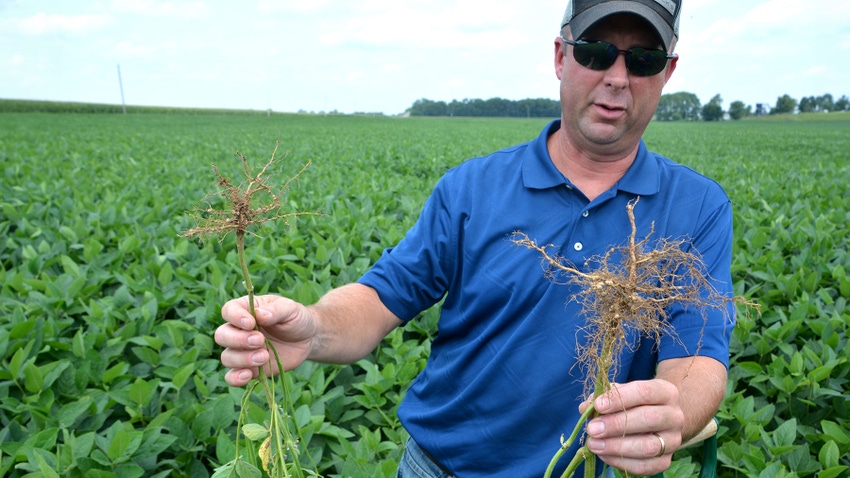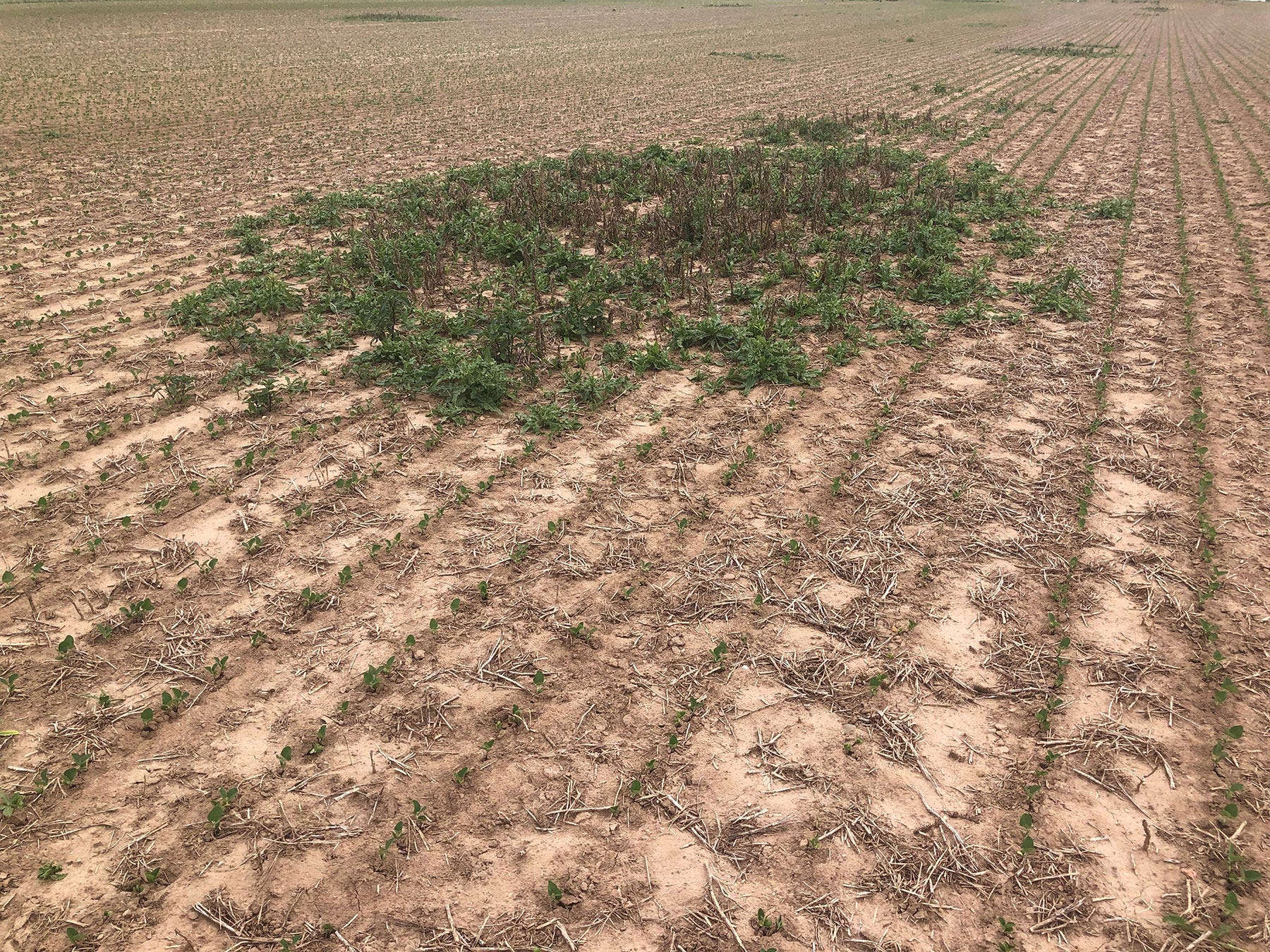
Steve Gauck made key observations in the Soybean Watch ’23 field all season. Although the field yielded well, there were blemishes. Patches of Canada thistles left their mark on both the field and yield.
“They were there the first time I visited the field, when soybeans were only at the V2 stage,” recalls Gauck, a regional agronomy manager for Beck’s, based near Greensburg, Ind. Beck’s sponsors Soybean Watch. “And although they were sprayed postemergence and the tops died off, I could still see evidence of those thistle patches all season.
“In midsummer, with beans at the R3 stage, I pulled up a plant from where the weeds grew earlier and compared it to a plant pulled where there was no weed pressure all season. The difference was striking. The weed-free plant was larger, with more branches and more pods. Stem diameter was greater, and it even had better roots.
“When soybean plants are crowded early by weeds, they tend to grow tall, seeking sunlight. Nodes are farther apart. You need nodes close together because the more nodes, the more pods, and the more pods, the more yield potential.”

WEEDS GET JUMP: This Canada thistle patch has a big jump on these small soybeans. Similar patches popped up throughout the field. The thistles were sprayed later and top growth died, but they had already made an impact.
Season-long impact
Gauck observed in early August that soybeans growing where patches existed earlier were lighter green, slightly shorter and behind in stage of development vs. weed-free areas.
“Competing with weeds of any type sets soybean plants back,” he explains. “Weeds competing with young soybeans do more damage than you might think.”
Even when Gauck returned near harvest, with leaves beginning to drop, he could still pick out the areas where Canada thistles were thick early in the season. When he walked into one of those spots, he found plants with fewer pods compared to plants he examined in areas where weeds were not a factor.
�“Since all the patches lumped together still represented a small area in this field, it likely didn’t impact final total field yield much, if at all,” Gauck says. “Yet watching how soybeans in those areas reacted throughout the season made an important point. Imagine if you had an entire field where soybeans competed with weeds early in the season. It’s easy to see that yield would be impacted.
“Using residuals and keeping weeds out of soybeans from the start of the season is extremely important. This field emphasized that point very well.”
About the Author(s)
You May Also Like




